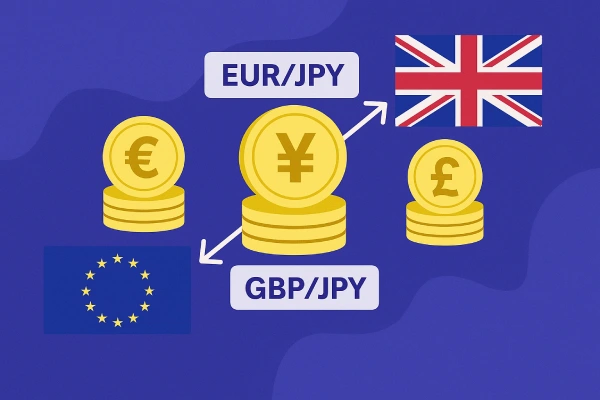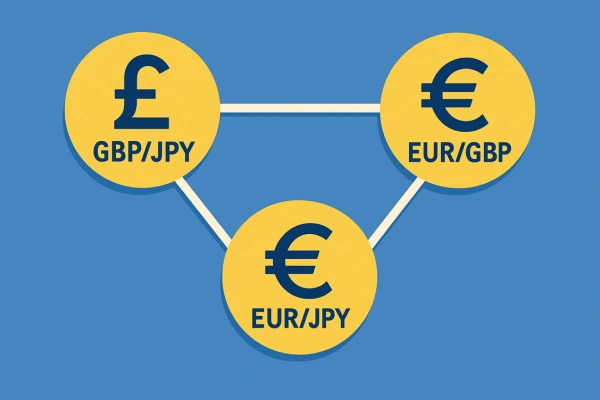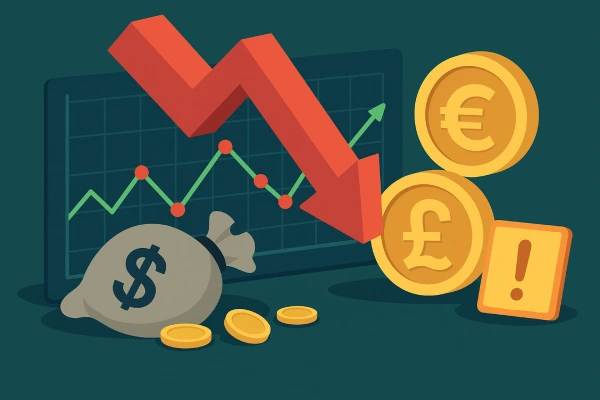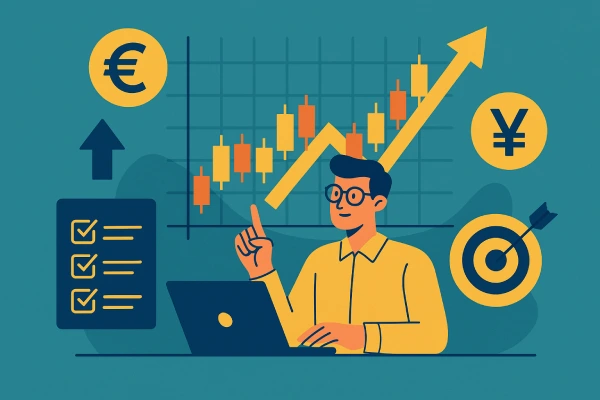What Are Cross Currency Pairs in Forex and Why Do They Matter?
What Are Cross Currency Pairs in Forex and Why Do They Matter?
" Discover what cross currency pairs are in Forex, why they matter, and how to trade them smartly. A must-read guide for traders looking to go beyond USD-based pairs."
Wikilix Team
Educational Content Team
15 min
Reading time
Beginner
Difficulty

Have you noticed how the conversation in Forex trading always seems to revolve around the U.S. dollar? You're not alone in feeling that way. Major currency pairs like EUR/USD or GBP/USD get all the glory, but beyond these currency pairings lies a vast landscape of trading possibilities. Welcome to the world of cross-currency pairs, a niche of the Forex market often overlooked by many traders, yet where savvy, seasoned traders are quietly making profits. If you're ready to discover a better, wider way to trade, this guide will help you understand why cross pairs are so essential and how they can help you with your trading.
What are Cross-Currency Pairs?
In simple terms, cross-currency pairs (usually referred to as "crosses") are currency pairs that do not include the U.S. dollar. Some examples of crosses are the EUR/JPY (Euro/Japanese Yen) or GBP/CHF (British Pound/Swiss Franc). Contrary to major pairs—which always involve the USD—crosses represent the direct exchange rate between two currencies that do not include the USD.
In the past, all cross currency transactions had to be converted to USD first, and then converted to the desired currency. Still, with the growth of the Forex market, and technology innovation, currency conversion now can be made directly. As a result, cross currency pairs are much easier, faster and more transparent to trade.

Why Cross-Currency Pairs Matter
1. More Opportunities for Trading
Cross-currency pairs can provide many more opportunities for trading than major cross-pairs. There are only seven major currency pairs, whereas there are dozens of cross-currency pairs that represent unique combinations. More combinations equal more price movements, trends, and potential for profitable trades.
2. Manage your Dependency on the USD
The U.S.The dollar is certainly a robust and powerful currency, but the dollar is also subject to a multitude of economic and political events. Trading cross pairs opens up a lot of opportunities for diversification and lowers your exposure to dollar-affiliated volatility. For example, if you want to trade the Euro, but want to stay away from dollar influence, then EUR/CHF or EUR/GBP is a better option.
3. Unique Markets Behavior
Cross-currency pairs can exhibit different patterns than major currency pairs. The EUR/JPY, for instance, will react more to the Asian or European market hours rather than the trade activity during the U.S. trading session and the USD-Economic news. Learning the appropriate market behavior will allow you to build niche strategies and extract specific market inefficiencies.
Popular Cross-Currency Pairs
Let's take a look at some of the most traded Cross pairs and why traders like them:
EUR/JPY (Euro / Japanese Yen): Lots of volatility—big favourite for technical traders.
GBP/JPY (British Pound / Japanese Yen): Has large price swings—popular for experienced traders.
EUR/GBP (Euro / British Pound): Moves more slowly—swing traders prefer.
AUD/NZD (Australian Dollar / New Zealand Dollar): Great for people that trade in the Asia Pacific part of the world.
CHF/JPY (Swiss Franc / Japanese Yen): Least liquid, but great for specific macro strategies
Each of these pairs will behave differently due to differences in time zones, as well as central bank policies and economic data published in the regions. Learning the signals and patterns of these events will provide the trader with an immediate advantage.

How to Analyze Cross-Currency Pairs
Cross pairs are analyzed in a slightly different manner from major currency pairs. Here's my advice on how to proceed:
1. Double Fundamental Analysis
You will want to follow the economic growth & news of both currencies involved in the pair. You are not just following one currency, but two. For instance, if you are trading EUR/GBP, you will want to remain aware of market decisions made by both the European Central Bank (ECB) and the Bank of England (BOE).
2. Understand Correlations
Specific currency pairs have tight correlations with other currency pairs. AUD and NZD, for example, are likely to move in similar paths due to their geographical and economic aspects. Knowing the correlations helps avoid redundancy in your trades and allows for better risk management.
3. Technical Patterns Still Exist
Don't worry—your favorite indicators (RSI, moving averages, Fibonacci retracements) are still applicable on cross pairs. Because they are less subject to high-frequency trading, technical setups are potentially cleaner and more reliable than on the major pairs.
Drawbacks of Trading Cross-Currency Pairs
Despite the many advantages of trading currency cross pairs, they may also carry certain risks that you should be aware of:
1. Lower liquidity (sometimes)
Lower volume can still exist in some less traded or exotic cross pairs, which can lead to higher spreads and slippage, especially during times outside of market hours.
2. Less news coverage
Unlike major pairs, cross pairs may not have primary league analysis or coverage by news networks. Often, you will have to sift through more muck to find the relevant information you're seeking.
3. Higher volatility
Some currency pairs, such as GBP/JPY, can and will move hundreds of pips in a single trading day. This is an exciting world, but it can prove dangerous if you are unsure of your ability to manage the risks associated with this volatility. A Few Tips for Successful Trading of Cross-Currency Pairs

Tips for Trading Cross-Currency Pairs Successfully
Start with Popular Crosses: If you are new to trading, start with pairs like EUR/JPY or EUR/GBP, and then venture into exotic combinations.
Watch the Economic Calendar for Both Economies: Don't just look at U.S. data, keep an eye on events in both countries of your pair.
Use Stop Losses, and Follow Risk Management: With the increased volatility comes increased risk, so protect yourself.
Be Aware of Time Zones: Some cross pairs will be more active in either the European or Asian session, so plan your trades appropriately.
Don't Overtrade: Just because there are more pairs, does not mean you have to trade all of them. Focus on a few and learn their behavior.

Example: EUR/JPY
If the European central bank is hawkish (raising its interest rates) while the Bank of Japan is dovish (keeping interest rates extremely low), that means there is a fundamental divergence. Usually, traders expect the Euro to strengthen against the Yen. This presents an opportunity to go long EUR/JPY, even if EUR/USD and USD/JPY show no movement. This unique circumstance provides opportunities in cross pairs that cannot be observed through the majors.
Final Thoughts
Cross-currency pairs in Forex are often neglected: NOT ANYMORE. Cross-currency pairs offer genuine opportunities for diversification, strategy, and trading profits. If you are a beginner and are tired of trading the identical pairs all the time, don't hesitate to expand beyond simply selling the majors. If you are an intermediate trader, trading cross-currency pairs might allow you to move into less crowded waters. Cross pairs can help make trading more dynamic again, whatever your reason.
The most important thing is to treat cross pairs equally, with the same amount of respect and research you would give the majors. Learn their characteristics. Understand what drives their behavior and run the pairs with a plan, rather than sheer speculation.
As you gain experience trading cross-currency pairs, you will begin to wonder why you ever limited your trading to simply the majors.
What's Next?
Keep building your knowledge with our structured learning path. Each section builds upon the previous one.
This is the first section
You're at the beginning of your journey!
This is the last section
You've completed this course!
